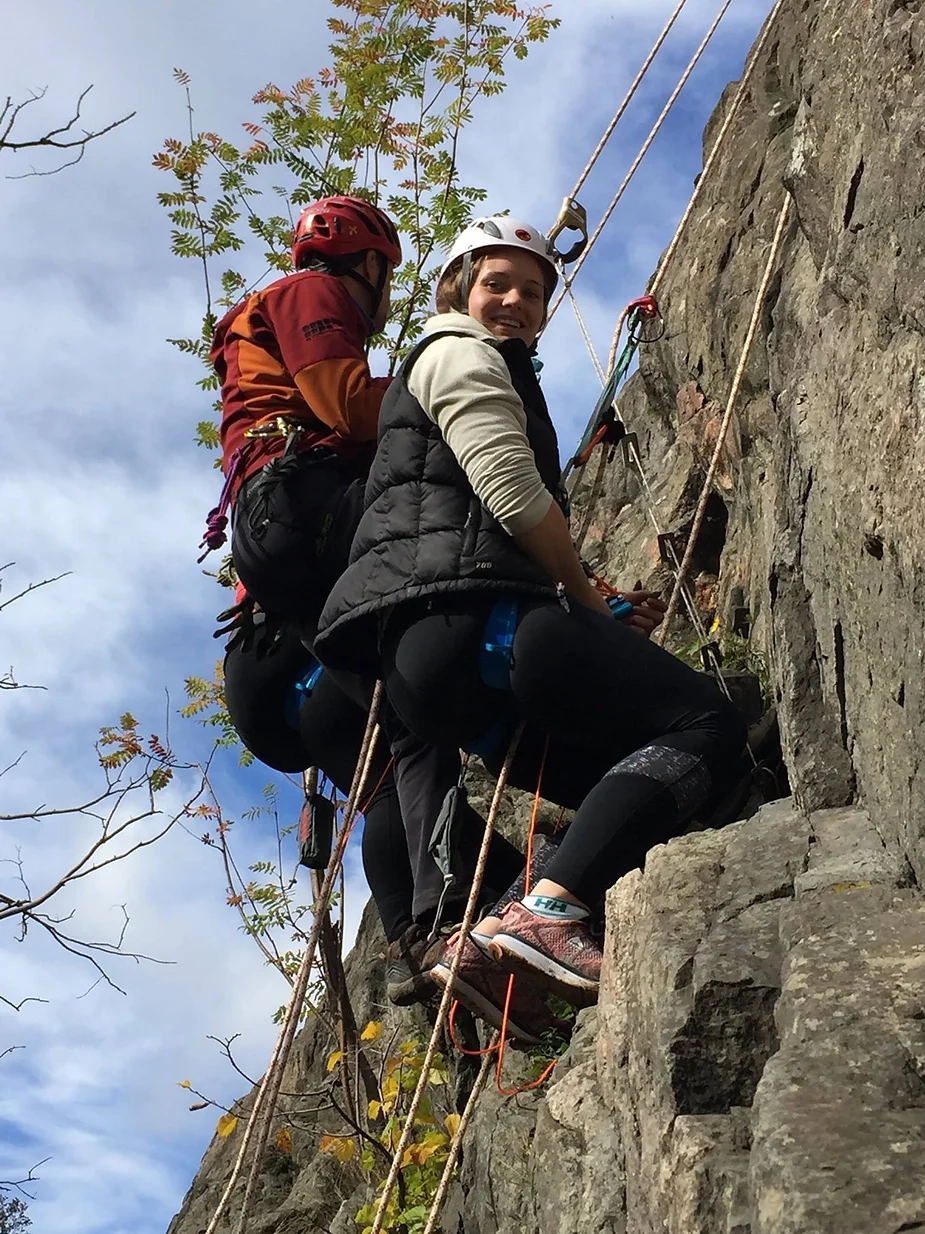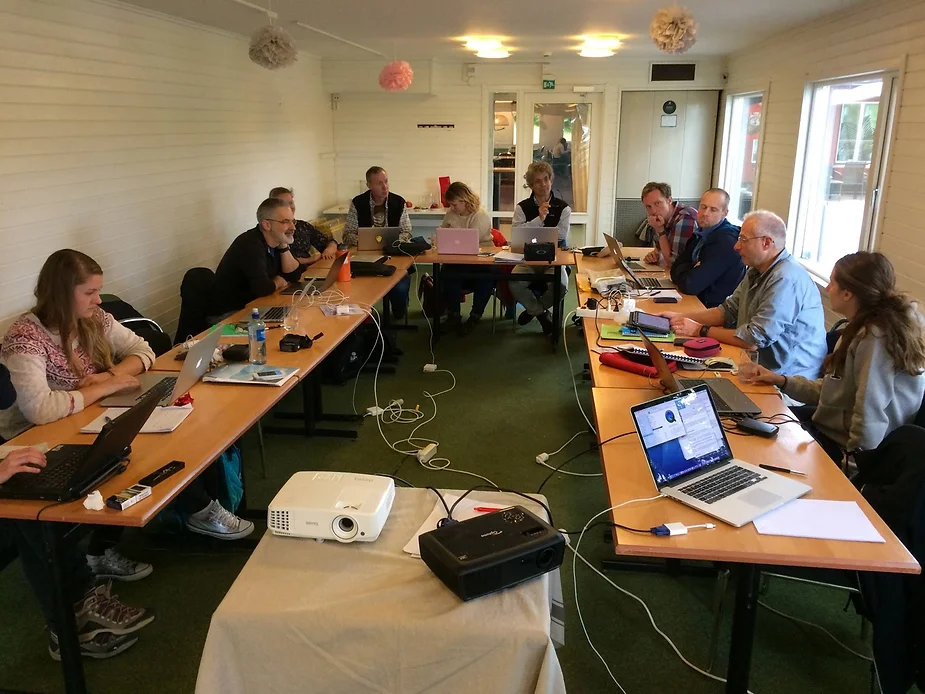Meeting in Stockholm, Sweden
10-16-2017
Category: Expedition Preparation
The week of October 2-8 was a busy one for the members of MAGIC-DML. It was spent preparing for the upcoming field season and reviewing progress from the previous one. The week began with a three-day meeting of the science and logistic team members who are going to Antarctica this field season. In this team, there are five researchers, a mountain guide (responsible for field safety), a technician, a medical doctor, and the expedition leader. The first things on the schedule were medical training and mountain safety.
During the medical training, the team was taught the ABCs of first response, well S/S C-ABCDE if you want to get technical. After learning how to identify the medical issues through seeing, feeling, and hearing, everyone practiced their hands-on skills of actually doing. For example, each member practiced applying tourniquets to other members.

Photo 1: Sarah Sams, Purdue University, practices applying a tourniquet to Arjen Stroeven, Stockholm University. Photo Credit: Jon Harbor
Up next was training for crevasse rescue and travelling over steep slopes. After putting on the harnesses and making sure all the gear was in check, each team member rappelled down a 10m cliff and then tried climbing (prusiking) back up the rope. This simulated being in a crevasse. Thankfully we have some neat Mammut RescYou devices for this, making it much easier and simpler than traditional prusiking. Others practiced anchoring, roping up, and knots.

Photo 2: Jennifer Newall, Purdue University and Stockholm University, is guided by Carl Lundberg, Skitouring Scandinavia, on rappelling and self-rescue. Photo credit: Arjen Stroeven
On Thursday, the other members of MAGIC-DML joined, bringing together the previous year’s field team, modelers, mappers, and students involved with the project. Over the next three days, the discussion revolved around the current state of our mapping, measuring, and modeling of the East Antarctic Ice Sheet (EAIS) in Dronning Maud Land. Mapping is being done utilizing GIS and GoogleEarth with the data available, such as TanDEM-X and World View imagery. Measuring the ice change involves using cosmogenic nuclide concentrations from samples collected in the field to determine surface exposure ages. Modeling uses datasets and parameters to project backward in time the conditions of the EAIS, specifically ice change.

Photo 3: Members of MAGIC-DML discuss results and plan for the upcoming field season. Photo credit: Derek Fabel
The results of the most recent data were discussed in order to analyze the previous field season, plan for the upcoming one, and focus outreach efforts. After three days of presentations and discussions, sites were selected, paper topics addressed, and outreach planned with all members excited about the data being produced and potential of the upcoming field season.
Each team member brings their own personal expertise to the table, but everyone was involved in the discussion and planning in order to address all angles of the project. That’s part of what makes this effort so interesting. The approach to different issues vary from each perspective making everyone’s input valuable and adds greatly to the results of the overall project.
#Training #LifeintheArctic